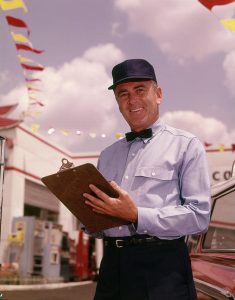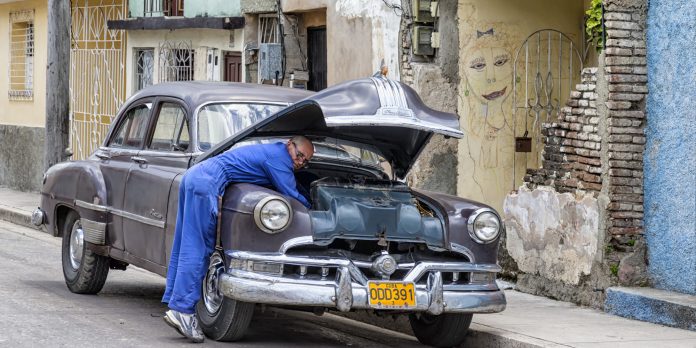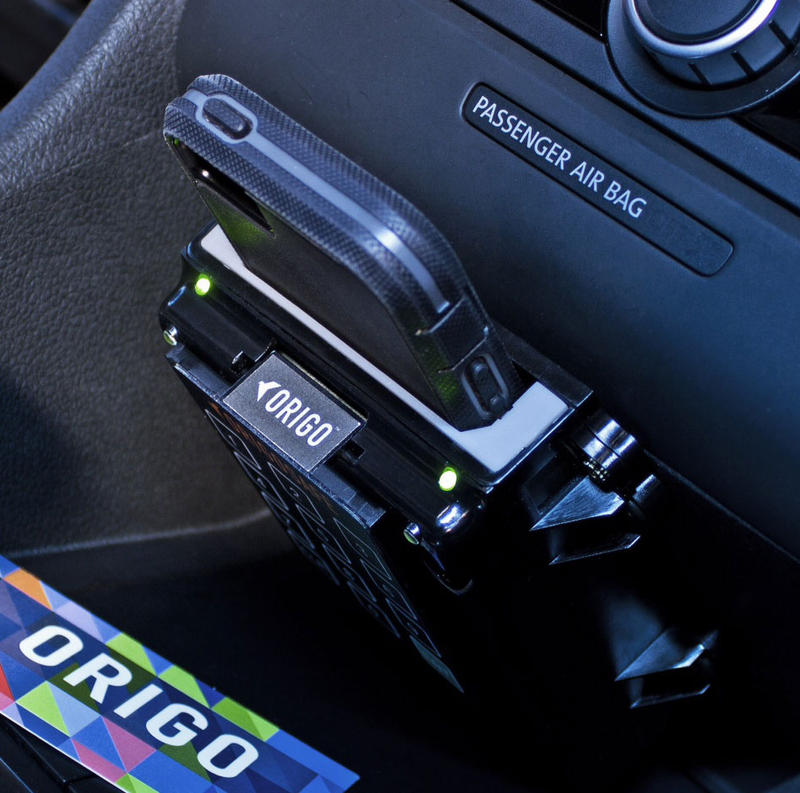There’s no reason why you shouldn’t be able to get at least 15 years and 200,000 trouble-free miles out of a new car today – putting off the day when you’ll have to dig deep for a replacement and also maximizing the investment you’ve got in your current wheels. Done right, you can end up with almost-free transportation. The car itself won’t have cost you much of anything – you’re only out of pocket for things like gas, oil/filter changes and so on.
The key thing is proper care – and proper driving.
Cars are a lot like our bodies; live like Elvis – and don’t expect to live very long. But treat your body (and your car) with care and respect – and both should last a very long time.
Try these:
* Regular maintenance per the factory recommendations –
Not just oil changes, but general maintenance, including periodic service of the brake system, cooling system, transmission – and so on. Most automakers provide a service schedule with their new cars, listing what should be done (and when) according to mileage accrued or time passed. These are not suggestions – they are there for a reason. Ignore them at your peril. As an example: Failure to have an ABS brake system periodically flushed can lead to the premature failure of major (and expensive) parts like the ABS pump – and expensive car repairs.
* Understand the difference between “Normal” and “Severe” use –
Unless you read the fine print, you may be under the impression you only need to have oil and filter changes and so on done once every six months or 6,000 miles, when in fact the driving you do qualifies as “severe use” and the changeout intervals are actually much shorter. The automakers tout their “normal” service intervals – which are typically pretty generous these days – making it seem like the need for routine service has almost gone away (implicitly saving you time and money). But if you live in a city/suburban area and your driving includes a lot of stop-and-go duty, then you usually qualify for the “severe” (or “heavy duty”) intervals, which tend to be much shorter. It’s important to follow the right schedule, in either case. Even if you do end up spending an extra $40 or $50 per year on oil and filter changes, that’s a lot less expensive than a prematurely tired engine – or the bill for a new car to replace your old one.
* Competent service by trained technicians –
“Do-it-yourself” work can result in botched repairs – and accelerated wear and tear. For example, overtightening the lug nuts after a routine tire rotation can warp brake rotors, which can end up leaving you with a big bill down the road.
Make sure the person under the hood knows what they’re doing – and avoid the temptation to fiddle with things yourself unless you understand what you’re doing and have the right tools to do the job.
* Driving style –
This last one’s often the deal breaker. Frequent full-throttle starts, late (and hard) braking, throwing the car around corners – it’s all lots of fun, but in addition to killing your gas mileage and prematurely wearing out your tires, it also means a shorter life for your engine, transmission, brakes, suspension parts and so on. Smooth, steady driving will extend the life of all these components – and the car as a whole. You’ll also save on gas and tires.
Finally –
* If you have a manual transmission, engage/disengage the clutch smoothly – without riding it, which will wear it out faster. Do not hold the clutch in while idling at a light; this places excess strain on it – which can lead to expensive repairs. Instead, depress the clutch, put the transmission in neutral and wait for the light to change. Then depress the clutch, put the vehicle in gear, smoothly release the clutch – and drive on.
* If you have an automatic transmission use the parking brake when leaving the vehicle. Throwing the transmission into “Park” without first applying the parking brake can put excess strain on the transmission, lock it in gear – even cause expensive damage that will require a tow.
* If you have a a truck or SUV with part-time four-wheel-drive, avoid engaging the 4WD on dry, smooth pavement. Never engage the 4WD Low setting (or differential lock) on dry, paved roads. (If you have a vehicle with AWD, the system will adjust itself automatically for given conditions.)
* Use the proper grade of fuel specified by the manufacturer. Even though modern cars can self-adjust for lower-octane fuel (preventing damage from premature-ignition that might otherwise occur) you’ll still suffer decreased mileage and lower performance as a consequence. Also, off-brand fuels may not have the same amount of detergents and fuel system additives of name-brand gas. Avoid filing up at out-of-the-way stations, where old (or water-laced) fuel may be a problem.
* Be gentle to the car in the extremes – summer and winter. Winter, in particular, is very hard on machinery. Using synthetic lubricants (which flow better at very cold temps., providing additional protection as well as decreasing friction, which saves gas) is a great idea. Synthetics also have better high-heat protective ability, too. Not just engine oil, either. Use synthetics in manual transmissions and differentials, too. (Just be sure before you do that it’s ok to do so; some late model cars use automatic transmission fluid in manual gearboxes – fyi.) Keep the cooling system in good running order. And if you have a car with an automatic transmission, be sure to service the unit – fluid and filter replacement – at least as often as the factory recommends.
* Replace the fuel filter at least every other year. (Some recommend once a year.) Many people neglect this small but very important maintenance item. The filter is all that stands between your car’s engine and whatever gunk is sifting around in the bottom of your gas tank. Filters are cheap; new cars aren’t.
Throw it in the Woods?











All good advice – but what to do when your car (late model SULEV BMW…) has a fuel pump and filter sealed inside the fuel tank. You can’t change the filter or pump without changing the tank to the cost of over $6,000! Maybe this is one car you don’t want to let last forever…
I have a 2004 Explorer with over 300,000 milies on it now. I had it in for transmission oil change and the dealer mechanic told me that the transmission pressures and clutches were such that if he had just installed it as a rebuilt, he’d accept it. I had the plugs changed, they had only been in there for 200,000 miles. The guy ther told me that the oil pressure and compression were within specs for a newly rebuilt engine. I have found that the 4.6 L V-8 is bullet proof. This is the 4th one I have taken over the 200,000 mile mark. The company I work for drives Fords. Until I started driving cars with this engine, I thought FORD was an acronym for Found On Road, DEAD!! I tow a car trailer with this one, and find that it is also an exceptionally good tow vehicle.
Thanks for mentioning the over-tightened lug nut thing. Now please send a group of thugs to every corner tire shop that uses an air wrench to tighten lug nuts.
Maybe have ’em make them an offer they can’t refuse so they’ll stop cranking things down to 250+Ft/Lb. That’d really help.
Most engine wear occurs when the engine is started from cold it takes a few seconds before the oil is pressurised during which time most of the engine wear occurs, a chap invented a pre-lubricator which could pressurise the engine oil before engine started thereby eliminating majority of engine wear.
I used to think the same thing, but now don’t even worry about it. Those pre-lubing things, block heaters, etc.. aren’t necessary. Modern engines usually last longer than the suspension and bodies on the vehicles. If you really want to help your engine do the factory scheduled maintenance and put some oil in the filter when you put a new one on.
Agree – especially with synthetics. But block heaters are almost essential if you live in a really cold climate. Go to Minnesota in winter and you’ll see!
I agree on that. One of my ex-girlfriends lived up near Vermont. That was pretty freaking cold. They all kept their cars in a somewhat heated garage, or they were super hard to start.
I’m going to try. Keep that puppy running as long as possible. Already I see changes. When I got my Civic pack in 2005 it was a mileage king pin. Only hybird technology was better. Today are cars getting around 40 mph. However my Civic still competes or is better in fuel economy with everything else out there.
Yup! It’d be fun to see how much mileage you could get out of an older (and much lighter) economy car, updated with a modern overdrive transmission.